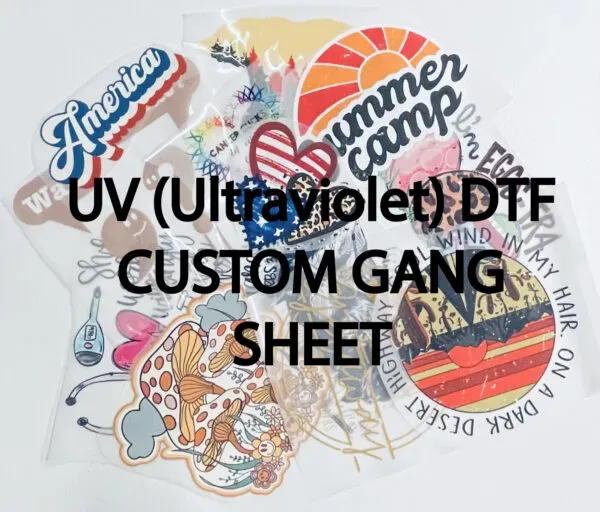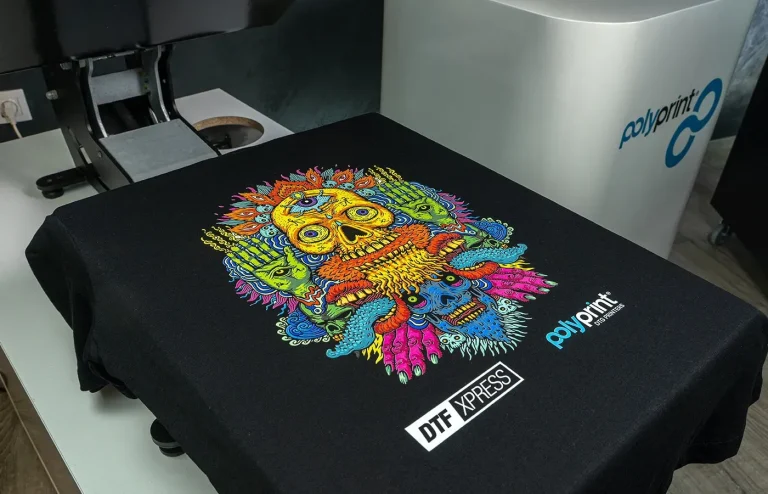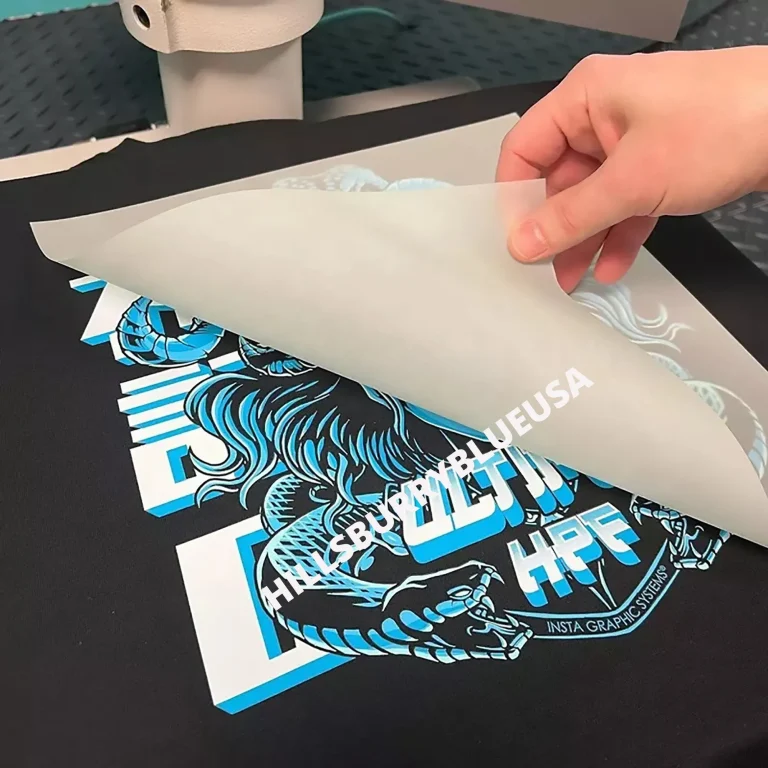In the realm of custom textile printing, **DTF and sublimation printing** have gained significant traction, becoming the forefront choices for many creators. Both methods offer unique capabilities that cater to various needs and preferences, allowing for vibrant expressions on fabric. **DTF (Direct to Film)** printing stands out for its versatility, accommodating diverse materials beyond the confines of light fabrics. Conversely, sublimation is celebrated for its stunning color vibrancy and durability, making it an ideal pick for clothing that withstands the test of time. Understanding the nuances of **DTF vs sublimation** can empower you to select the best fabric printing methods for your artistic endeavors.
When exploring the landscape of fabric printing techniques, two standout options are **Direct to Film** printing and sublimation methods. These innovative printing solutions have revolutionized the way we approach custom textile designs, each catering to distinct applications and textile compatibility. **Direct to Film** is particularly noteworthy for its ability to print on a range of materials, making it a favorite for complex artwork on darker fabrics. On the other hand, the sublimation process is renowned for embedding vibrant dyes into polyester fibers, ensuring longevity and unbeatable color intensity. Whether you’re delving into fashion design or producing promotional items, understanding these advanced printing technologies can enhance your creative outcomes.
Understanding the Basics of Direct to Film (DTF) Printing
Direct to Film (DTF) printing is rapidly transforming the landscape of custom textile printing. This innovative technique involves printing designs onto a special transfer film, which is then applied to the fabric using heat and pressure. One of the primary advantages of DTF printing is its ability to work on a variety of materials, including cotton, denim, and blends, making it a versatile option for designers and small businesses. The process also allows for intricate details and vibrant colors, offering a range of possibilities for both apparel and promotional items.
Moreover, DTF printing stands out for its cost-effective nature. Unlike traditional screen printing, which necessitates extensive setup and high minimum order quantities, DTF printing is ideal for smaller runs of custom designs. This makes it an attractive option for hobbyists and entrepreneurs who want to offer unique products without the overhead costs typically associated with larger commercial operations.
The Sublimation Process: A Closer Look
Sublimation printing embodies a chemical process where dye transitions from a solid to a gas, effectively embedding colors into the fabric. This technique is primarily used on polyester or polyester-blend materials, producing extraordinarily vibrant and durable prints. The sublimation process not only ensures that the colors remain intact over time, but it also provides a soft feel as the dye is absorbed into the fiber rather than sitting on top of it, making it perfect for high-quality apparel.
For those looking to produce all-over prints, sublimation is the go-to method. Sports apparel and fashion designers often rely on this technique due to its ability to cover large areas seamlessly with vibrant designs. Whether creating a stunning sports jersey or a custom-printed blog merchandise, sublimation delivers high-quality results that are both visually appealing and long-lasting.
DTF vs Sublimation: Making the Right Choice
When comparing DTF and sublimation printing, it’s crucial to understand the specific needs of your project. DTF printing has the upper hand when it comes to fabric compatibility, allowing prints on dark-colored and cotton fabrics, while sublimation is limited to lighter materials, mainly polyester. This distinction is vital for makers who wish to explore different textures and fabric choices without constraints.
Additionally, considering design complexity can influence your choice. DTF printing excels in producing intricate details and multi-colored designs, which can be particularly beneficial for artists and small businesses looking to showcase their creativity. On the other hand, sublimation works best for larger graphics and less complex designs, where vibrancy and color depth are paramount.
Key Features of DTF Printing Technology
One of the standout features of DTF printing is its ease of application. Following the printing process, designs are cut out, and a hot-melt adhesive powder is applied before the transfer to the fabric. This method enhances the print’s stickiness and durability, ensuring the final product withstands washing and everyday wear. Furthermore, DTF provides flexibility regarding production runs, accommodating small orders without sacrificing quality.
Another appealing aspect of DTF technology is its ability to produce prints that remain soft and flexible on the fabric. Unlike some forms of printing that may leave a heavy texture, DTF allows for a high-quality finish that feels smooth against the skin, which is particularly important for wearable items. This results in a comfortable experience for consumers, making DTF an excellent choice for custom apparel.
Advantages of Using Sublimation Printing
The advantages of sublimation printing go beyond color vibrancy; this method also yields exceptional durability. Because sublimation dye transforms into gas and permeates into the fibers of the fabric, it resists fading, cracking, and peeling over time. As a result, clothing made using sublimation is perfect for activewear or products that will be frequently washed and worn, ensuring an extended lifespan without sacrificing design quality.
Additionally, sublimation printing offers an unparalleled smooth finish. As the dye is embedded into the fabric, the printed area remains soft to the touch, enhancing comfort—a quality that is especially significant for athletic or casual wear. This level of quality makes sublimation a preferred method among those who prioritize not just aesthetics but also functionality in their textile applications.
Real-World Applications of DTF and Sublimation Printing
The applications of DTF and sublimation printing span across various sectors, including fashion, promotional products, and home decor. For instance, DTF printing is particularly favored in the streetwear scene for its ability to handle complex designs and vibrant colors on dark apparel. Meanwhile, fashion designers typically prefer sublimation for its ability to create stunning, all-over prints that appeal to a broad audience, especially in sportswear and active lifestyle markets.
In home decor, DTF printing proves to be exceptionally resourceful for custom pillows, blankets, and other textiles that may require printing on both light and dark fabrics. Lastly, for promotional products, businesses have found both methods to be beneficial. Sublimation excels with items like mugs and coasters, while DTF shines with personalized tote bags and caps, providing businesses with varied branding opportunities.
Frequently Asked Questions
What is DTF printing and how does it compare to sublimation printing?
DTF printing, or Direct to Film printing, is a method that allows high-quality designs to be printed onto a special film and then transferred onto various fabrics using heat. In contrast, sublimation printing embeds dye into polyester fabrics, making it ideal for vibrant prints on light-colored materials. The choice between DTF and sublimation depends on the fabric type and the complexity of the design.
Can DTF printing be used on dark fabrics unlike sublimation printing?
Yes, DTF printing excels in printing on dark fabrics and various materials like cotton and blends. Unlike sublimation printing, which is primarily effective on light-colored polyester fabrics, DTF offers versatility across different textile applications.
What are the advantages of using sublimation printing over DTF printing?
Sublimation printing provides outstanding color vibrancy and durability, as the dye becomes part of the fabric, preventing fading and cracking. This method is particularly well-suited for all-over prints on polyester, making it a go-to choice for athletic apparel and products requiring longevity.
What types of designs are best suited for DTF printing vs sublimation printing?
DTF printing is ideal for intricate designs with multiple colors, offering detailed reproduction that caters to small batch productions. Meanwhile, sublimation printing works best for larger, simpler designs that utilize vibrant, flowing colors, especially on light polyester fabrics.
Is DTF printing cost-effective for small custom textile printing runs?
Yes, DTF printing is a cost-effective option for small runs because it doesn’t require large quantities of fabric or specialized inks. This makes it appealing for hobbyists and small businesses looking to create custom apparel without the overhead of mass production.
Which fabric printing method, DTF or sublimation, offers better durability for wearable items?
Sublimation printing offers better durability for wearable items as the print is embedded into the fabric fibers, leading to resistance against fading and wear. DTF prints, while high-quality, may not offer the same level of durability depending on the film and transfer process used.
| Key Features | DTF (Direct to Film) | Sublimation Printing |
|---|---|---|
| Versatile Material Compatibility | Can print on various materials including cotton and dark fabrics. | Ideal for polyester and light-colored surfaces. |
| Complex, Detailed Designs | Excels at reproducing intricate designs and vibrant colors. | Best for larger areas and simpler designs. |
| Cost-effective for Small Runs | More affordable for smaller quantities or hobbyists. | Typically requires higher volume to justify costs. |
| Durability Factors | Quality of transfer and film can affect durability. | Long-lasting as the dye becomes part of the fabric. |
Summary
DTF and sublimation printing have become two pivotal methods in the realm of custom textile printing, each with its distinct advantages tailored for various applications. DTF printing offers the flexibility to work with a broader range of materials, particularly cotton and dark fabrics, making it an appealing choice for many designers and hobbyists. On the other hand, sublimation printing is renowned for its vibrant color reproduction and durability, especially suited for polyester fabrics. As the custom printing market continues to evolve, understanding these methods enables artists and businesses to choose the right technique that aligns with their creative vision and product needs. By recognizing the strengths of DTF and sublimation printing, you can better leverage these technologies to produce high-quality, lasting designs that meet the demands of today’s consumers.






